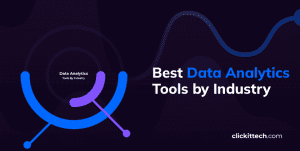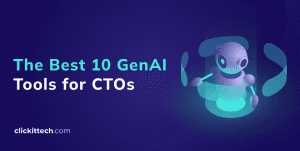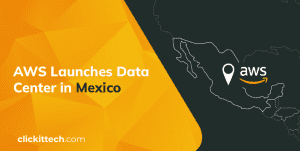Successful teams follow best practices like the Twelve Factor App Methodology to help them design applications with a stateless approach and decoupling service components.
This blog will cover the relevance of these principles, established to avoid common problems in app development, like harder rollbacks, inconsistencies across environments, difficulties in monitoring and debugging, and scaling and reliability issues.
Adhering to the Twelve-Factor App methodology helps developers create easier applications to build, deploy, and scale, ultimately leading to more robust and maintainable software.If you are working on creating or improving a SaaS application, this blog post is for you. So, let’s dive in.
- Twelve Factor App Use Cases for SaaS
- Twelve Factor App Principles
- Twelve Factor App Conclusion
- Twelve Factor App FAQs
You might also be interested in Multitenant Architecture SaaS Application on AWS and Single Tenant vs Multi Tenant SaaS Architecture.
Twelve Factor App Use Cases for SaaS
First of all, the 12 Factor App is a methodology for building Software-as-a-Service (SaaS) apps that:
- Use declarative formats for setup automation.
- Have a clean contract.
- Are suitable for deployment on Cloud Platforms.
- Enable continuous deployment for maximum agility.
- Can scale up without significant changes.
Twelve Factor App Principles
Here are some key principles of the Twelve Factor App Methodology that can help you to implement it better.
1. Application Configuration Files
Configuration factor. Configuration information like URLs, necessary data for locating databases, and credentials should be outside the codebase. This allows for easy management of configuration settings for different environments without changing the codebase.
These configuration files are replaced with environment variables. i.e., Db connections, secrets, environment, hosts, IP, etc.
2. Application Dependencies
Dependencies factor. Indicates that they shouldn’t be in your codebase. Instead, you should use a dependency management tool to identify, declare, and isolate the large dependencies and libraries required from the server, like Gemfile, site-packages, pom.xml, manifests, etc.
This ensures that all necessary libraries and tools are defined and can be installed consistently.
3. Use a Control Versioning System
Codebase factor. Using a Version Control System to manage and track changes in your app’s source code is essential. This benefits the integrity and scalability of your software, so it is an important principle to follow. For example, by integrating Git or AWS CodeCommit.
4. Stateless Applications and Processes
Processes factor. According to the 12 factor app methodology, it’s crucial that your application doesn’t store any data in the local file system or is dependable from a persistent state in the application or server. In other words, the application/server can be turned off and recreated without losing any data. Only persistent data is stored in databases or backend services.
In case of application failure, splitting components as much as possible and making them undependable to others will result in an easy analysis and isolated issue.
5. Immutable Infrastructure
Disposability factor. Maximizing robustness with fast startup and graceful shutdown allows the application to be resilient and easily deployable.
Applications should be designed to start and stop instances quickly, facilitating rapid scaling and deployment. For example, instances should not be modified after provisioning. Instead, a standard base image (such as an AWS AMI) should be regularly updated and patched. This practice ensures smoother AWS auto-scaling, reduces deployment failures, and maintains consistent infrastructure.
6. Dev, Test, and Production Parity
Dev/Prod Parity factor. Your environments must be as similar as possible regarding software, libraries, databases, data, and code. Furthermore, it’s possible to close the gap across all environments with a CVS, repeatable infrastructure, and continuous integration/delivery (CI/CD).
This minimizes the chance of environment-specific bugs.
7. Continuous Integration and Continuous Delivery (CI/CD)
Build, Release, Run factor. As the app grows, you must implement a mechanism to release code to your different instances and enterprise environments. Designing a continuous delivery workflow is essential to improve development productivity with scalability, multiple environments, and a distributed architecture. This process gets easier thanks to modern technologies and CI/CD tools.
8. Backing Services as Attached Resources
Backing services factor. Treating backing services as attached resources means they can be swapped or scaled independently without requiring code changes. Your application should not distinguish between local and third-party services, ensuring seamless integration and flexibility.
This approach simplifies scaling, as developers can easily add or replace services without redeploying the application, and enhances portability with smooth transitions across different cloud providers or on-premises infrastructure.
9. Self-contained Applications
Port binding factor. Applications should be self-contained, and services should be exposed via port binding. This means the application should run as a service that binds to a specific port and listens for requests. By doing so, the application can be easily accessed over a network and does not rely on a web server or other runtime injection.
This facilitates a clean separation of concerns, allowing developers to focus on building application logic while relying on the environment to handle routing. Additionally, it makes deploying and scaling applications straightforward, as each instance can run independently on its designated port.
10. Applications Scaled Through the Process Model
Concurrency factor. The application should scale out by using the process model, allowing multiple instances of processes to handle workloads. This enables better handling of concurrent workloads and facilitates horizontal scaling. Processes should be stateless and share-nothing, ensuring that scaling and load distribution are efficient and manageable.
This factor enhances reliability and fault tolerance since individual process failures do not affect the overall system. It also allows for dynamic scaling based on demand, improving resource utilization and performance during peak times.
11. Logs as Event Streams.
Logs factor. The application should not concern itself with log storage or management. Instead, it should output logs to stdout and rely on the execution environment to capture, aggregate, and store the log data. External tools can easily manage, analyze, and monitor logs.
Troubleshooting and debugging will get easier by centralizing log management and making logs accessible in real time. It also supports compliance and auditing requirements by maintaining a consistent and comprehensive logging strategy across all application components.
12. One-off Administrative Processes
Admin Processes factor. Administrative or management tasks such as database migrations, cron jobs, or maintenance tasks should be run as one-off processes. These processes should be executed in an environment identical to the regular application processes, ensuring consistency and reliability.
This facilitates the easy execution of admin tasks without affecting the main application runtime. It enhances security by isolating administrative tasks from the application’s core processes and improves maintainability by providing a clear and consistent method for performing essential maintenance activities. This separation also reduces the risk of errors and simplifies the management of application lifecycles.
Take a look at our slideshow for an overview of what you need to know about the twelve-factor app.
Twelve Factor App Conclusion
The implementation of the Twelve Factor App methodology is the right option to solve systemic problems in apps. Plus, it provides a shared vocabulary and broad conceptual solutions for them. These architectural principles are part of the DevOps strategy, a set of practices that organizations incorporate to increase their success through automating, strengthening, and optimizing their application.
At ClickIT, our DevOps and Software Development team is ready to build and improve cloud applications. We incorporate modern technologies and follow the best practices like the Twelve Factor App Methodology. So don’t hesitate to contact us to be part of this digital transformation.
Twelve Factor App FAQs
The Twelve Factor App is a methodology for building Software-as-a-Service (SaaS) apps suitable for deployment on Cloud platforms, allowing you to build scalable and reliable applications.
The Twelve-Factor App is considered relevant while facilitating seamless collaboration between developers working on the same app. It is an accurate option for solving systemic application problems and providing a shared vocabulary.
To implement the Twelve-Factor App in a better way, here are the top three principles that can help To implement the Twelve-Factor App better, here are the top three principles that can help you.
-Application config files should be outside of the codebase
-Dev, test, and production parity should be as similar as possible regarding software, libraries, database, data, and code.
-It’s crucial that your application doesn’t store any data in the local file system.









